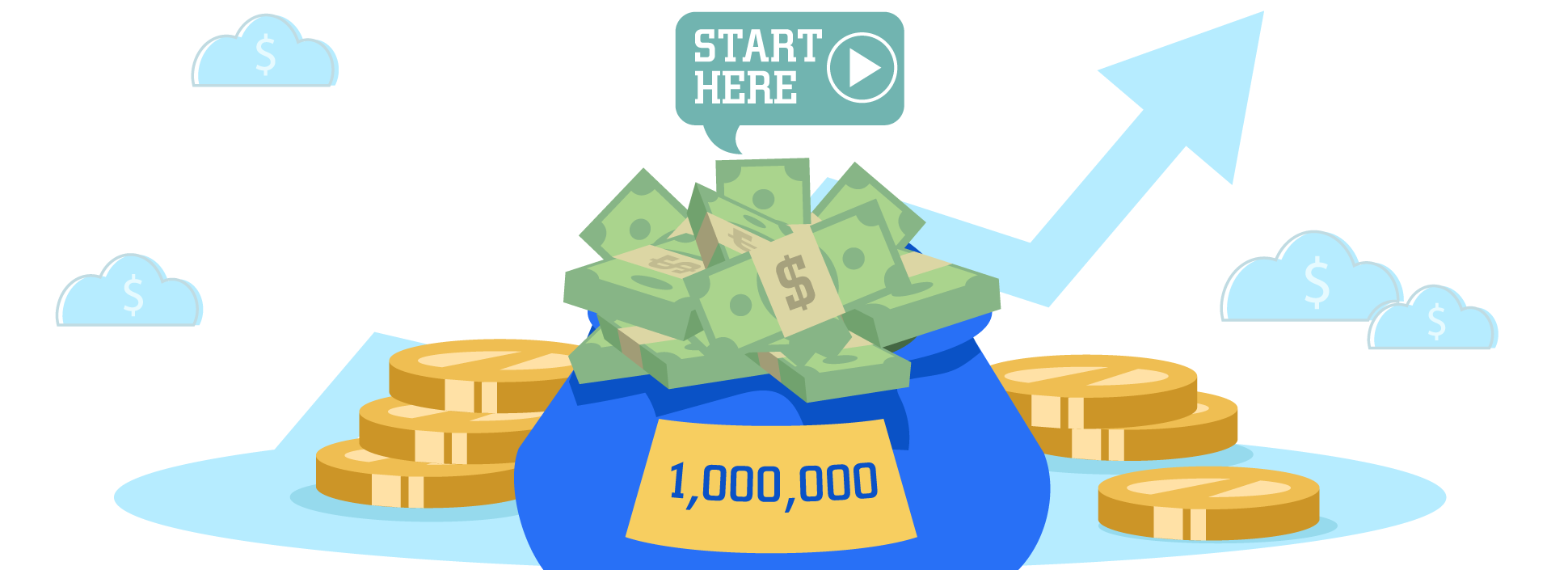If you’ve ever wondered how to invest $1 million wisely, you’re not alone. Investing such a large sum requires a thoughtful, balanced approach and needs to be done for a secure future. In this article, we’ll break down a simple and human approach to investing $1 million for long-term financial security — without taking unnecessary risks.
Whether you’ve received this amount through years of saving, a business windfall, or inheritance, the key is to grow and protect it smartly. Here’s a clear and SEO-friendly guide in simple language on how to invest 1 million dollars today for a better tomorrow.
The Mindset Before Investing a Million

Investing $1 million is not like investing smaller amounts. When you invest $100,000 or $250,000, you may take moderate risks. But when you’re dealing with $1 million, there’s more at stake. Losing that kind of money could take an emotional and financial toll. So, your focus should shift to preservation and passive growth.
Also, your investment style should reflect how you got the money. If you earned it over 10+ years, you’re likely to be more careful. If it was a sudden gain, you might lean toward more aggressive growth — but that’s where smart planning comes in.
What Having $1 Million Really Means
If you have a paid-off home and $1 million in investable cash, you’ve crossed a major milestone. At this point, you don’t have to chase risky investments. You can choose stable, income-generating options and still live comfortably.
Having this kind of capital gives you the freedom to create passive income, maintain financial independence, and plan for early retirement or even generational wealth. But you still need to invest it the right way.
Real-Life Example: A Strategic Move in 2025
The article’s author shares how he invested over $1 million in 2020 during the early pandemic phase. He used it as a down payment on a forever home and took a low-interest mortgage for the rest.
Today, that home investment has appreciated by around 57%. While he considered other ways to use the money — like investing more in stocks — he doesn’t regret the real estate decision. This shows that even during uncertain times, real assets like property can offer strong returns and long-term security.
How Would He Invest $1 Million Today?
Based on his experience and current market conditions, here’s how he would split a $1 million investment today:
- Buy One More Rental Property –$200,000 to $300,000
Rental properties offer two types of returns: monthly rental income and long-term property value growth. With interest rates expected to drop from late 2024 onwards, real estate prices may rise again — making this a smart time to invest.
I suggest using $200,000 to $300,000 as a down payment to buy a property. However, if you don’t want the stress of being a landlord, there are other options too.
- Invest in a Private Real Estate Fund – $400,000

construction site close to pavement under sunshine
Not everyone wants to manage tenants or maintain properties. For those seeking truly passive income, private real estate funds are ideal. The author invested $550,000 in a fund after selling one of his rentals and has enjoyed 8%–9% annual returns without any headaches.
Platforms like Fundrise make it easy to invest in diversified real estate portfolios. These funds often invest in high-growth areas like the Sunbelt region of the U.S. and offer consistent returns with minimal involvement.
For those with higher net worth, peace of mind and time freedom often matter more than chasing maximum returns. That’s why this is a top pick for him.
Why This Plan Works
This mix of real estate and passive income funds balances growth, stability, and liquidity. You earn income through rent or fund distributions and potentially enjoy long-term asset appreciation. You’re not gambling on high-risk investments — instead, you’re building wealth steadily and smartly.
Plus, with smart real estate moves and tax-efficient funds, you can also reduce your tax burden.
Final Thoughts: What’s the Goal?

The goal isn’t just to grow your money — it’s to use it to buy your freedom. If you can cover your lifestyle with passive income and preserve your capital, you’re financially free.
Whether you’re young and ambitious or older and more cautious, a $1 million investment should serve your life goals — not just chase numbers. Your strategy should match your values, your risk tolerance, and your stage in life.






Leave a Reply